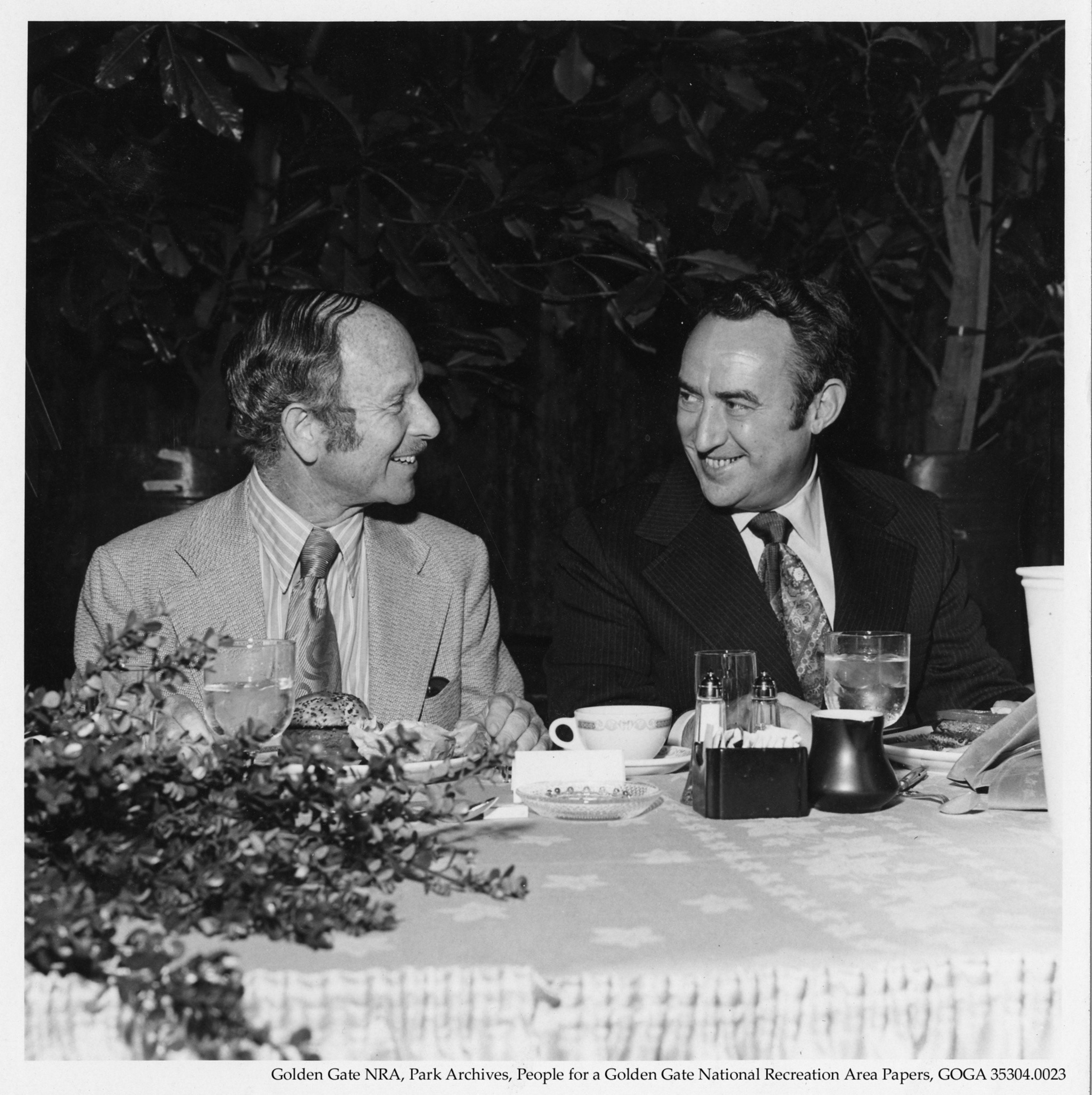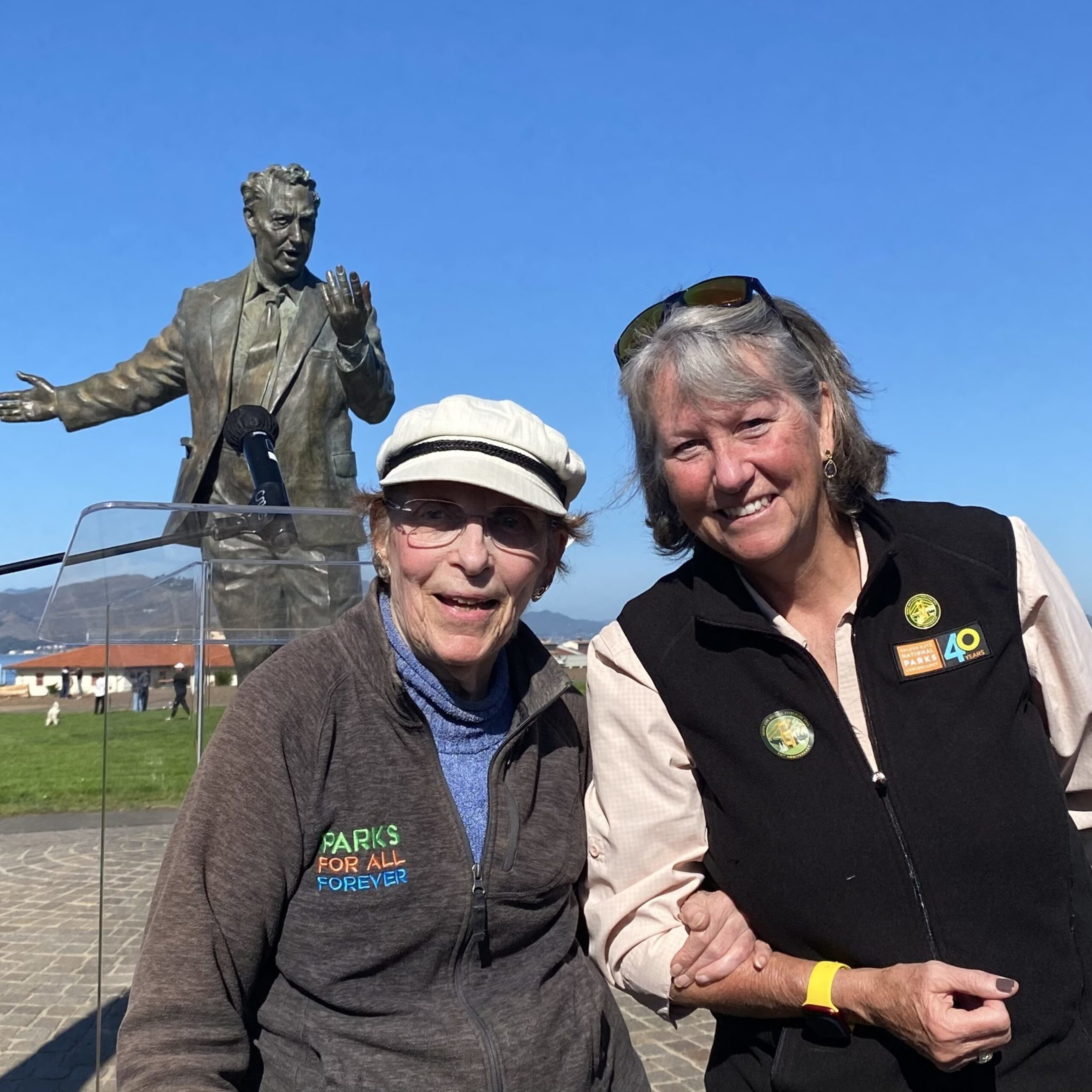As bike tours passed, locals walked their dogs and lines of pelicans flew overhead, government officials, community leaders and dozens in ranger “flat hats” (opens in new tab) gathered in Fort Mason this morning to mark the 50th anniversary of the creation of the Golden Gate National Recreation Area (opens in new tab) (GGNRA), the first urban national park in the United States.
Speaker of the House Nancy Pelosi (D-San Francisco) headlined a group of leaders who took the podium in Fort Mason’s Great Meadow under a larger-than-life statue of Phillip Burton (opens in new tab), the congressman from San Francisco who authored the legislation that created the GGNRA that was signed into law by President Richard Nixon (opens in new tab) on Oct. 27, 1972.

“We have been coming to this park with our children and grandchildren for many years—it’s a family affair,” Pelosi said. The GGNRA is now one of the most popular parks in the National Park System, employing more than 9,500 people and attracting 15.3 million visitors, who contributed an estimated $1 billion to nearby economies in 2021 alone.
“When our soldiers came back from fighting in the Pacific, this is what they saw,” she continued, gesturing to the bridge, bay and Marin Headlands behind her. “When immigrants from Asia and other places came to our country, this is what they saw. And when our children come to the park, this is what we want them to take pride in.”

The fact that the GGNRA saved the natural environment surrounding the Golden Gate from development was a key theme of the morning’s remarks. In the 1960s, a plan to develop the Marin Headlands (opens in new tab) coupled with the decommissioning of Fort Miley in the Outer Richmond spurred local groups to push for the creation of a national park from these former military sites.
“These views look the same now as they did 50 years ago,” said “Mother of the Park” Amy Meyer (opens in new tab), the San Francisco woman who plotted to preserve the area from her kitchen table. Meyer thanked “the wonderful, fire-eating” Burton and her mentor, longtime Sierra Club president Dr. Ed Wayburn (opens in new tab), for their guidance and support.

During its first few years, the GGNRA covered about 34,000 acres of land in San Francisco and Marin counties. Over the years, the legislation authored by Burton allowed the park to take over more decommissioned military areas. Areas in the North Bay, the South Bay and the city were annexed to the park, including, most notably, The Presidio in 1994, bringing GGNRA to about 82,000 acres of parkland today.

With a significant portion of the park’s land lying north of the Golden Gate Bridge—including the Marin Headlands, Stinson Beach, Bolinas Ridge and Muir Woods—Congressman Huffman of Marin County agreed with Meyer. “There are people in Marin who use this park every day. […] We all have a lot to appreciate and be thankful for.”
Because of its urban location, the GGNRA works closely with local communities and partners to make “parks for the people, where the people are” as Burton had envisioned. The YMCA brings nearly 20,000 visitors to the park each year to “advance park equity for all,” with an emphasis on bringing youth from Chinatown and the Bayview.

“In the entire world of national parks, this is the park that leads in using partnerships to achieve its mission,” said Christine S. Lehnertz, president and CEO of the Golden Gate National Parks Conservancy, the park’s nonprofit partner. Fundraising by the Parks Conservancy (opens in new tab), helped the Presidio Trust and the National Parks Service open the expansive new Tunnel Tops park earlier this year.
The park will soon be releasing a calendar of events to mark the next 12 months to celebrate its birthday. (Want to celebrate sooner? Click here to get The Standard’s bucket list of must-do SF activities in the park.)
“This park actually began 150 years ago because people were loving these natural areas, Mount Tamalpais, Ocean Beach, Crissy Field. […] They wanted to preserve the land for public use and enjoyment,” said Meyer. “I want to look to 50 years from now and say, ‘We’ve really had a good time here.’”
